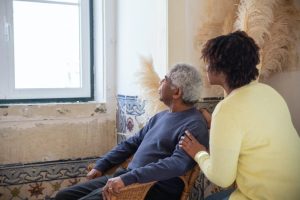Physical activity is a key outcome in maintaining overall health, wellbeing and quality of life for elderly individuals. Incorporating physical activity into home care routines encourages independence and significantly contributes to the physical, mental, and emotional well-being of the elderly. In this comprehensive guide, we will explore the benefits of physical activity for the elderly in their own homes and provide practical tips on seamlessly integrating exercise into their daily home care routines.
Understanding the Importance of Physical Activity for the elderly
Physical activity is a cornerstone of healthy aging, offering numerous benefits that can positively impact the lives of the elderly. Regular exercise has been linked to improved cardiovascular health, enhanced mobility, and increased muscle strength. Additionally, physical activity plays a crucial role in preventing chronic conditions such as osteoporosis and arthritis, common concerns for the aging population.
Beyond the physical advantages, exercise has been proven to have positive effects on mental health. Regular physical activity can alleviate symptoms of depression and anxiety, boost cognitive function, and enhance overall mood. For the elderly receiving home care, incorporating exercise into their daily routines can be a powerful tool for maintaining independence and a sense of purpose.
Tailoring Physical Activity to Individual Needs
Every individual is unique, and their physical abilities, health conditions, and personal preferences vary. When incorporating physical activity into home care, it is essential to tailor exercise routines to individual needs. Consultation with healthcare professionals, such as physiotherapists can provide valuable insights into the specific requirements of each service user.
Low-impact exercises like walking, swimming, or tai chi are excellent choices for the elderly with mobility issues or joint concerns. Strength training exercises using resistance bands or light weights can help maintain muscle mass and bone density. Additionally, flexibility exercises like yoga can enhance joint mobility and reduce the risk of falls.
Integrating Exercise into Daily Home Care Routines
Seamlessly integrating physical activity into daily home care routines requires a thoughtful and personalised approach. Here are practical tips for carers and family members:
Morning Stretches:
Begin the day with gentle stretches to promote flexibility and wake up the body. Simple stretching exercises targeting major muscle groups can be performed in bed or while seated, making them accessible for the elderly with limited mobility.
Walks and Outdoor Activities:
Weather permitting, outdoor walks can be a delightful way to incorporate physical activity into a service user’s routine. A short stroll around the garden or neighbourhood not only provides exercise but also offers exposure to fresh air and sunlight, contributing to improved mood and overall well-being.
Chair Exercises:
For the elderly with mobility challenges, chair exercises are an effective way to engage in physical activity. Seated leg lifts, arm circles, and seated marching are examples of exercises that can be performed safely from the comfort of a chair.
Incorporate Hobbies:
Linking physical activity with enjoyable hobbies can make exercise more appealing. For example, gardening, dancing, or even light housework can contribute to a service user’s daily physical activity requirements.
Establish a Routine:
Consistency is key when incorporating physical activity into home care. Establishing a routine can help the elderly adapt to regular exercise, making it a natural part of their daily lives.
Monitoring and Adjusting Physical Activity Plans
Regular monitoring of a service user’s physical activity levels is crucial to ensuring their safety and well-being. Carers should observe any changes in mobility, balance, or discomfort during exercises. Communication with healthcare professionals is essential for making adjustments to the exercise plan as needed.
If the service user’s experiences challenges with certain exercises or if there are changes in their health status, it may be necessary to modify the physical activity routine accordingly. Flexibility and adaptability are key elements in providing effective home care that includes a focus on physical activity.
Conclusion:
Incorporating physical activity into home care for the elderly is a holistic approach to promoting overall health and well-being. By understanding the importance of exercise for the aging population, tailoring activities to individual needs, integrating exercise into daily routines, and regularly monitoring and adjusting plans, caregivers can make a significant positive impact on the lives of the elderly under their care. As we collectively strive for a society that values and supports the aging population, prioritising physical activity in home care becomes an essential step towards fostering a healthier and more fulfilling life for the elderly.
If you or a relative require the services of a highly trained care worker(s) from a reputable care agency do not hesitate to contact us and we will gladly reach out and craft a relevant care package for you. We are a home care professional service provider with over 17 years’ experience offering live-in and hourly home care services in Havering, London Borough of Barking & Dagenham, Leicester, Hampshire, Northampton, and Bedfordshire. We also offer all relevant health & social care training that enhances the skill sets for home care service delivery. Call us on: 07423836202 and speak with our CQC registered care manager or email us on: info@anytimebusinessgroup.co.uk.



